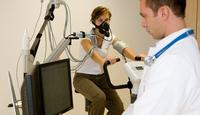Light Therapy : Radiating Wellness Through Photon Power
 |
| Light Therapy |
Light Therapy, also known as phototherapy, is a therapeutic
approach that utilizes various wavelengths of light to treat a wide range of
physical and mental health conditions. By harnessing the power of photons,
light therapy offers a non-invasive and drug-free method to promote wellness
and healing in the body and mind.
The concept of light in Light Therapy as a healing agent dates
back thousands of years, with ancient cultures recognizing its therapeutic
properties. Today, modern light therapy has evolved with advancements in
technology and medical research, making it a popular alternative or complementary
treatment for many health issues.
One of the primary applications of
light therapy is in the treatment of seasonal affective disorder (SAD), a type
of depression that typically occurs during the fall and winter months when
there is reduced exposure to natural sunlight. By using special light boxes
that emit bright light, often mimicking natural sunlight, individuals with SAD
can experience relief from depressive symptoms and a renewed sense of
well-being.
Light Therapy is not limited to mental health conditions; it has
proven effective in addressing skin disorders such as psoriasis, eczema, and
acne. Different wavelengths of light target specific skin cells, promoting
healing and reducing inflammation. For instance, ultraviolet (UV) light is used
to slow down the rapid growth of skin cells in psoriasis, alleviating itching
and redness.
Moreover, light therapy has gained
traction as a treatment for sleep disorders, such as insomnia and circadian
rhythm disturbances. By regulating the body's internal clock through exposure
to specific wavelengths of light at precise times, light therapy helps restore
healthy sleep patterns and improve overall sleep quality.
In recent years, researchers have
explored the potential of light therapy in pain management. Low-level light
therapy, also known as photobiomodulation, has been found to reduce
inflammation and promote tissue repair, making it an attractive option for
those seeking non-pharmacological pain relief.
Aside from these applications, Light Therapy is also used in the
management of mood disorders, jet lag, and even in improving cognitive function
and focus.
A stopcock is a sort of medical
device and an intravenous ball valve. The fluid flow is directed into the blood
vessels by an Intravenous Stopcock cap. There
are several different types of shut-off valves, including burette, vacuum, and
needle valves. This medical device has an on/off controller and is primarily
designed to control the flow of liquid or gas. A closure clip is used in
intravenous extensions to help control the fluid channel while fluids or drugs
are administered.
In conclusion, light therapy's
ability to radiate wellness through photon power presents a compelling case for
its integration into modern healthcare practices. By harnessing the therapeutic
properties of light, this non-invasive approach offers a promising avenue for
promoting healing, enhancing mental well-being, and improving overall quality
of life.


Comments
Post a Comment